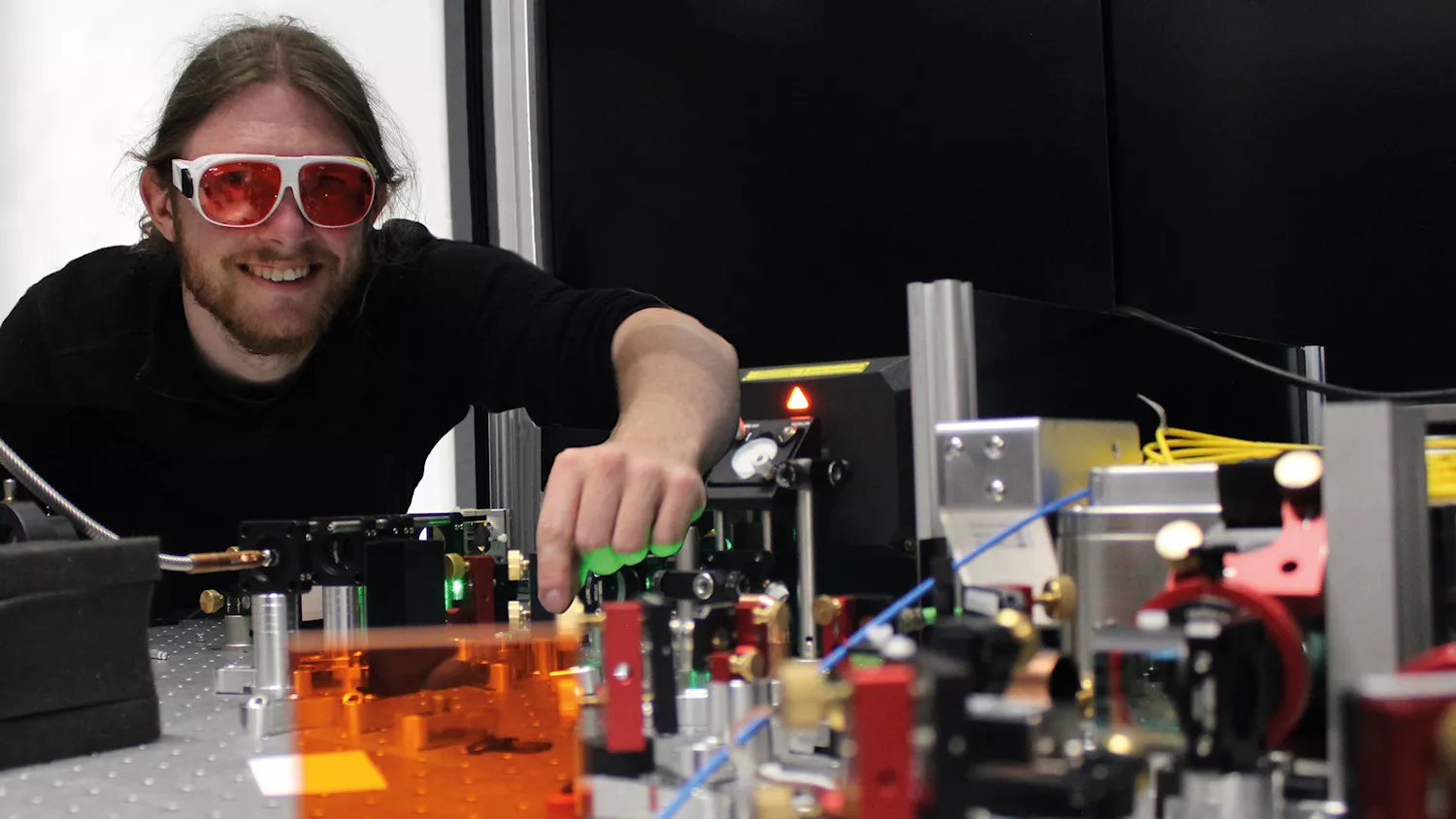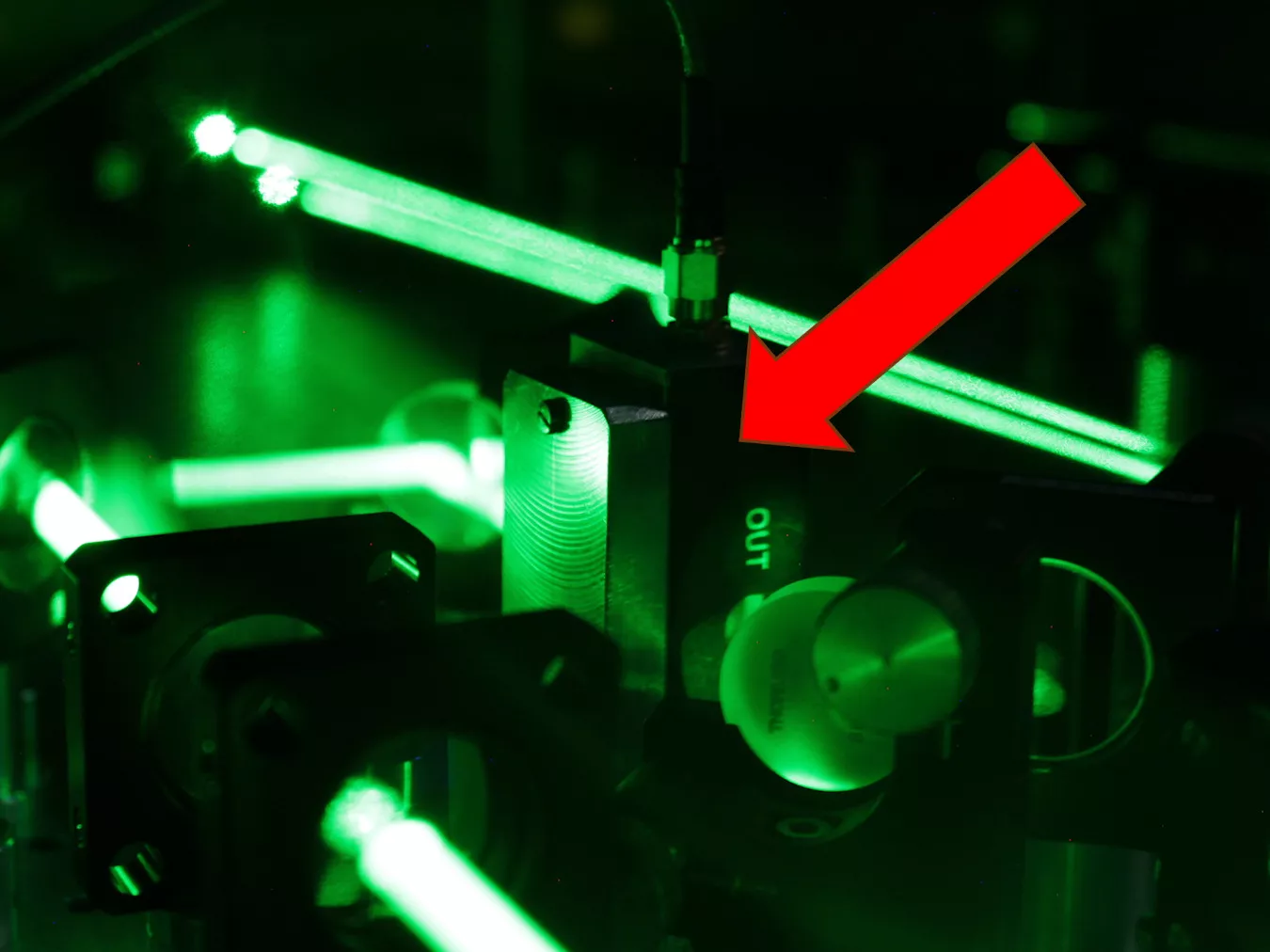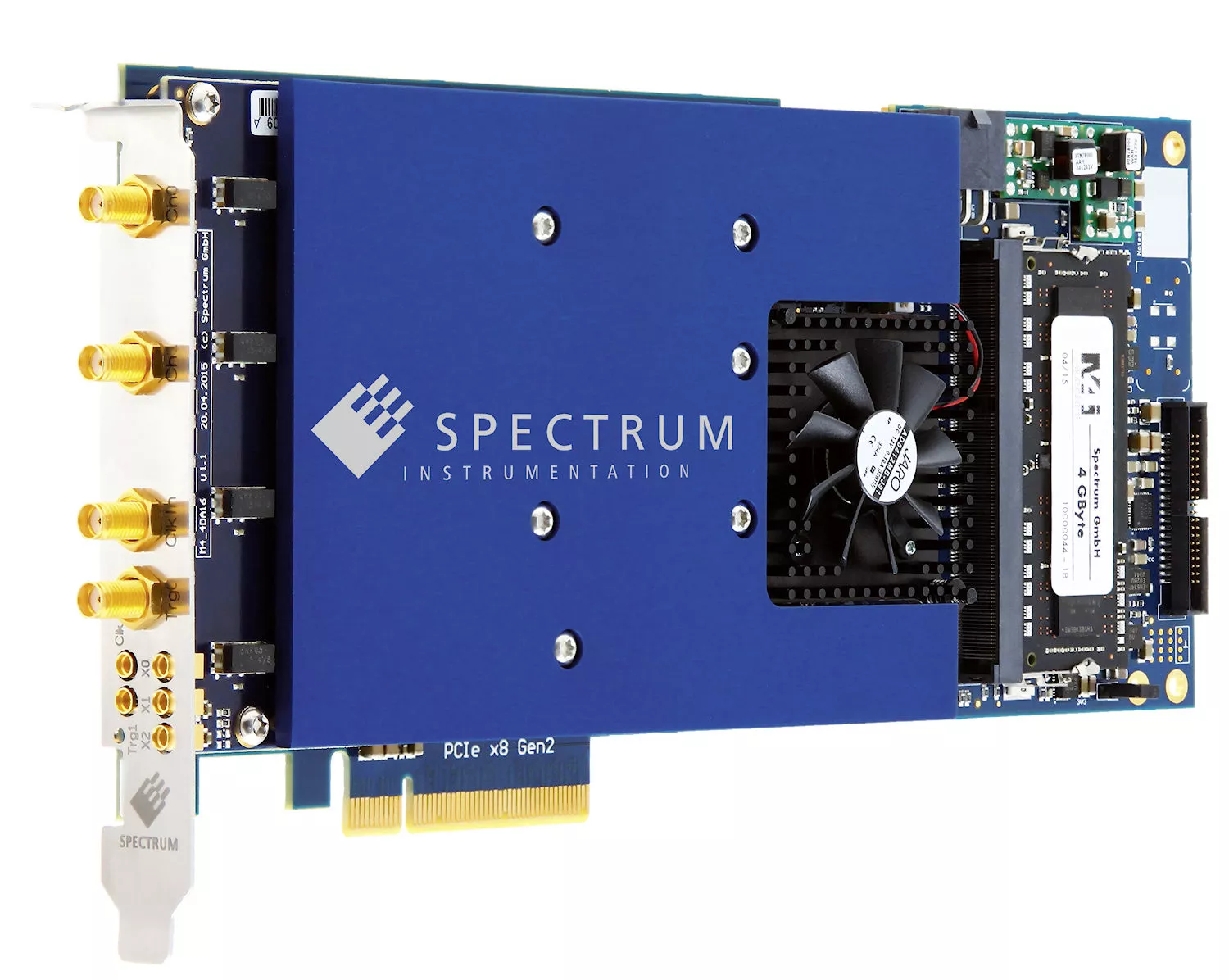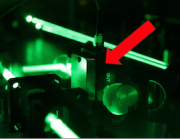日本語で読みたい方は、 google chromeで開き、
画面上で右クリックをして、「日本語に翻訳」をクリックしてください
There are many ways to build a Quantum Computer (QC) and RPTU Kaiserslautern’s approach within the Rymax One collaboration is to create an array of single atoms that act as qubits. The challenge is moving and holding each atom in its precise location. This is done by using a laser on each atom that traps it into the center of the laser beam effectively acting as an optical tweezer. However, point-by-point programming of each movement of the beam currently requires a lot of programming and a huge amount of data. This has now been cut dramatically with the use of the new Direct Digital Synthesis (DDS) firmware option from Spectrum Instrumentation so that the position of the lasers can be controlled with a few simple commands that define the start and stop parameters instead of making time consuming, large data array calculations.
 Graduate physicist Jonas Witzenrath at the quantum experimental setup of University Kaiserslautern, Germany
Graduate physicist Jonas Witzenrath at the quantum experimental setup of University Kaiserslautern, Germany
Dipl.-Phys. Jonas Witzenrath said, “This is making a huge difference to the progress of our research. Using the new DDS option, we have been able to make rapid progress and reduce the complexity in the system allowing us to focus on advancing the research. The next step is to do the reordering of atoms in a static two dimensional array using the dynamic capabilities of the DDS-firmware.” Furthermore, in the next phase, they will use the AWGs to shape ideal UV laser pulses for precisely controlling interactions between qubits.
“DDS has become a vital tool in our project and we are finding that it can actually be used in other things in the lab as it is very flexible and can be used for other functions so we don’t have to buy dedicated equipment for them. For example, pulsed lasers, chirp generation, etc. We worked very closely with Spectrum to develop this DDS feature and are now working on expanding its possible uses in research so that it can help other laboratories.”
 The acousto-optic deflector (AOD, red arrow) splits one laser beam into many controllable single beams which catch and hold the atoms
The acousto-optic deflector (AOD, red arrow) splits one laser beam into many controllable single beams which catch and hold the atoms
He added that the Spectrum AWG cards were chosen as they are becoming the solution of choice for quantum research due to their great analogue performance paired with large memory and high transfer speed onto the card. The latter is crucial as the experiment has to pause until the re-ordering waveforms are computed and uploaded onto the cards. The transfer speed sets the Spectrum AWG cards apart from other products and that is the main reason why they are widely used in the AMO/QC community. The speed of the card’s operation was also very important. Fast AWGs have the intrinsic problem of latencies on the order of tens of milliseconds or large jitter which results in inaccuracies and longer processing times as the system corrects and recorrects. The DDS firmware enables Spectrum’s AWGs to generate commands within twenty microsecond and, due to the intrinsic timing, the commands are practically jitter-free.
In one example experiment, the Spectrum Instrumentation AWG card M4i.6631-x8 is used to drive an AOD (Acousto-Optic Deflector) that generates a tweezer to trap the atoms. The AOD is driven with an RF-signal with a frequency around 82 MHz. With their current setup, a change of 1 MHz moves the tweezer with an atom by about 8 μm within 100 μs, using s-shaped frequency ramps to minimize heating. During this time, the amplitude of the signal is linearly changed to compensate for changes in light intensity.
THE DDS FIRMWARE OPTION
 Widely used by quantum researchers around the word: The M4i.6631-x8 Arbitrary Waveform Generator with 1.25 GS/s sampling speed, 16-bit resolution and 2 channels
Widely used by quantum researchers around the word: The M4i.6631-x8 Arbitrary Waveform Generator with 1.25 GS/s sampling speed, 16-bit resolution and 2 channels
DDS is a method for generating arbitrary periodic sine waves from a single, fixed-frequency reference clock. It is a technique widely used in a variety of signal generation applications. The new option by Spectrum Instrumentation allows users to define 23 DDS cores per AWG card, that can be routed to the hardware output channels. Each DDS core (sine wave) can be programmed for frequency, amplitude, phase, frequency slope and amplitude slope. The DDS output can be synchronized with external trigger events or by a programmable timer with a resolution of 6.4 ns.
In DDS-mode, the AWG acts as a generator for the multi-tone DDS signal. The unit’s built-in 4 GByte of memory and fast DMA transfer mode then allows the streaming of DDS commands at a rate as high as 10 million commands per second! This unique capability provides the flexibility to perform user-defined slopes (e.g. s-shaped) as well as various modulation types (e.g. FM and AM) with simple, easy-to-use, DDS commands.
THE RYMAX ONE QC DESIGN
Since 2021, Spectrum Instrumentation and the University Kaiserslautern have been part of the BMBF (German federal ministry of education and research) funding program ‘quantum technologies – from basic research to market’ as part of the Rymax One consortium. The aim of this consortium is building a Quantum Optimizer. For this purpose, individual Ytterbium atoms are suspended in a vacuum in a Rydberg state using optical tweezers. The Rymax collaboration specifically focuses on quantum optimization problems, such as the Maximum Independent Set problem, and algorithms such QAOA or quantum annealing to find solutions. This allows them to build optimized hardware for “analog” quantum computing. One key-aspect of the design is dynamic control over (UV-)laser light, for which full control over the different RF-signals is required. This is where Spectrum Instrumentation’s long-standing expertise is valuable.
RELATED DOCUMENTS
Application Note: Using Spectrum DDS in Quantum Research
Application Note: Using Spectrum DDS in different Applications
Product Note: Using DDS Mode in Detail
Find more details on the DDS mode
出典:
https://www.spectrum-instrumentation.com/news/202406_Uni_Kaiserslautern_Quantum_Experiment.php
ご参考:
(株)光響が提供する製品・サービス情報:
・量子コンピュータ
・(光響製)光ピンセットキット
記事の追加及び削除:
記事の追加あるいは削除を希望される場合、お手数ではございますが、
以下窓口までご連絡ください。
info@symphotony.com
この情報へのアクセスはメンバーに限定されています。ログインしてください。メンバー登録は下記リンクをクリックしてください。

